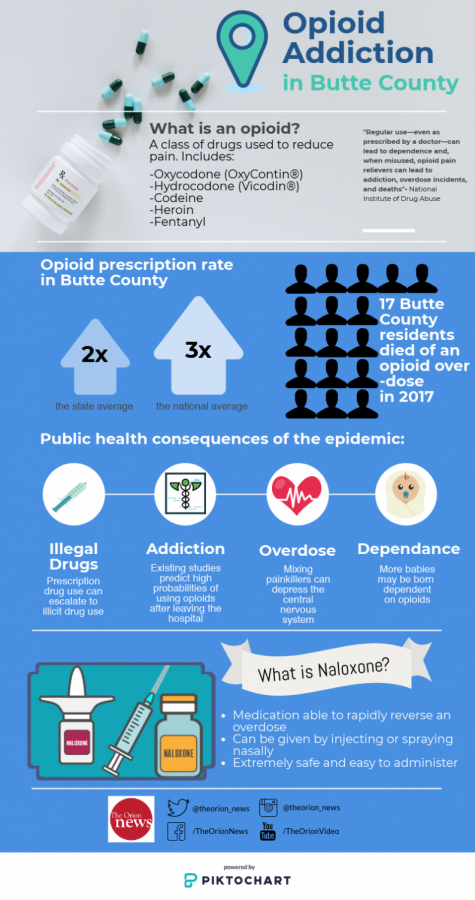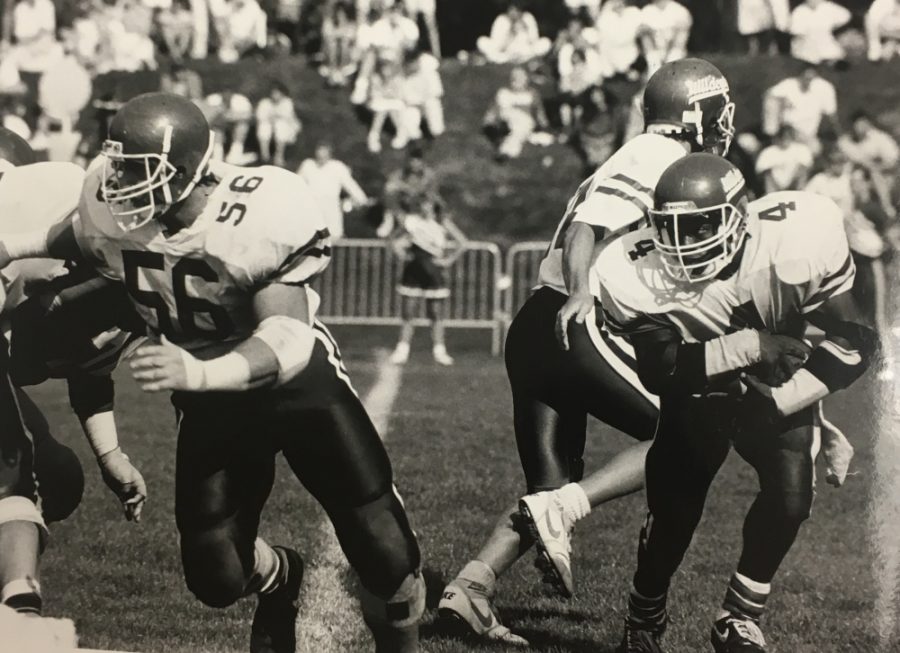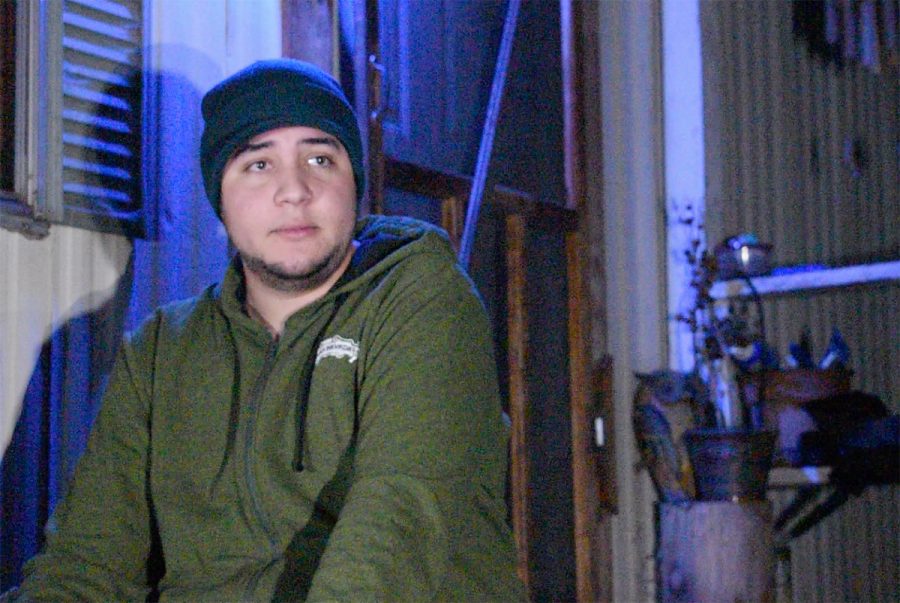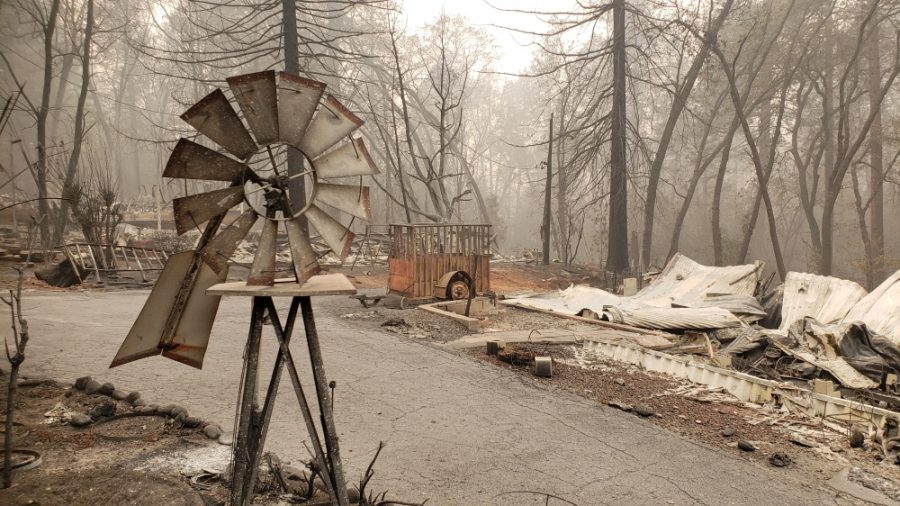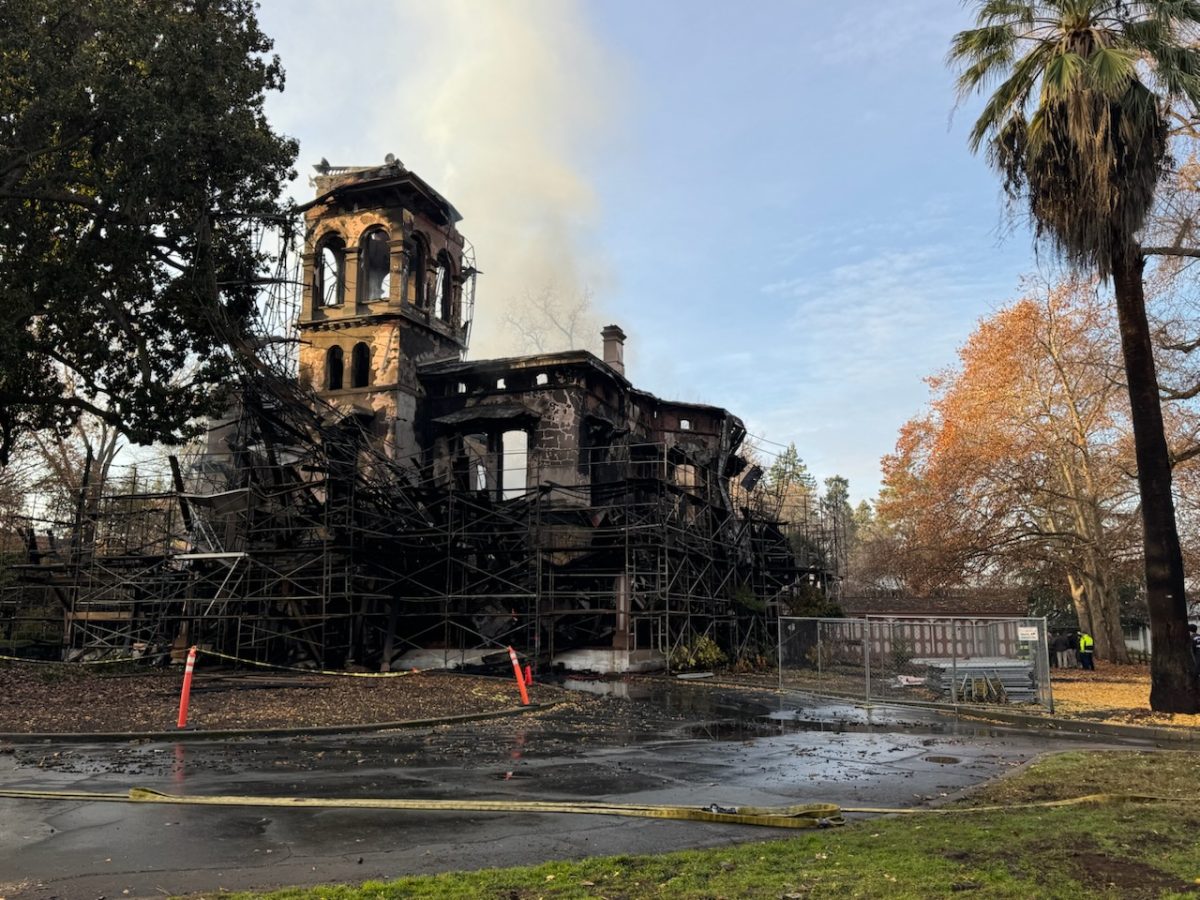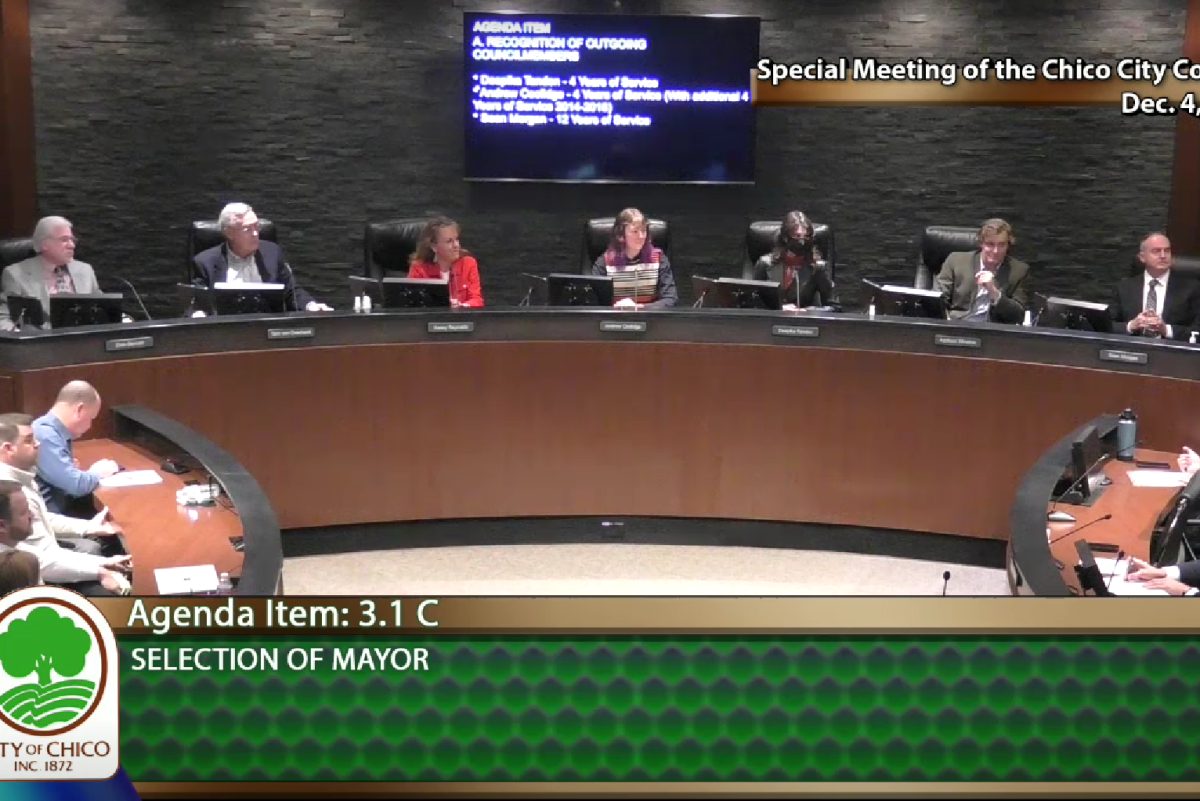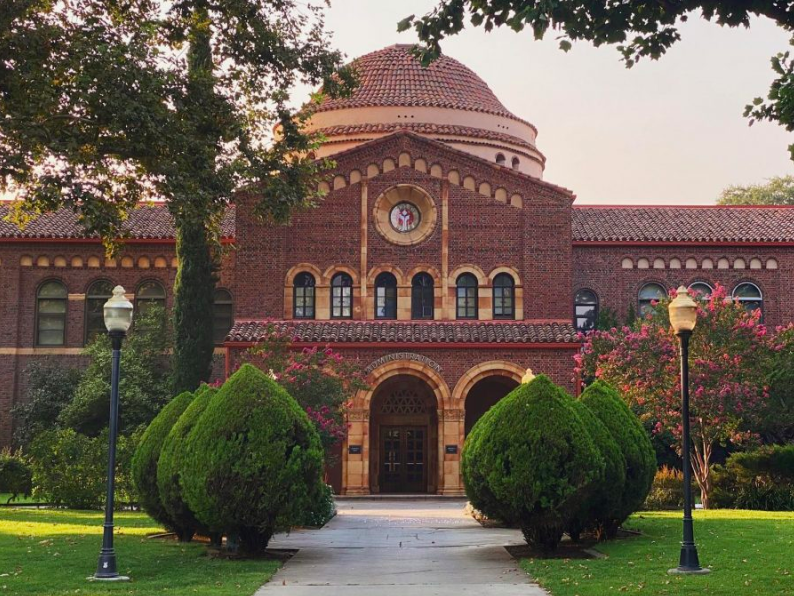A local harm reduction group is looking to combat the rise of opioid abuse and overdose among Butte County residents.
In light of the Camp Fire, members of the Northern Valley Harm Reduction Coalition (NVHRC) have been visiting unofficial shelters to provide sharp containers for needles and opioid overdose trainings.
The 100 percent volunteer run organization was founded in July 2018 by 20 individuals initially looking to fix the shortage of syringe depositories in Butte County. The coalition now provides services ranging from educational seminars to free opioid overdose-prevention training and aid kits.
Opioid is an umbrella term describing prescription drugs as well as street drugs. Drugs in this class range from doctor-prescribed Percocet to street drugs like heroin.
“The amount of opioids prescribed to Butte County residents is two times higher than the state average and three times the national average,” says Butte County Public Information Officer, Lisa Almaguer.
According to Almaguer, well-intentioned hospital prescriptions may cause lasting harm.
“For opioid non-users who leave the hospital with a 30-day prescription of an opioid painkiller, 30 percent of them will still be on an opioid one year later and 25 percent of them will still be on an opioid three years later,” Almaguer said.
The NVHRC provides localized trainings free of charge, aimed at educating and arming the public. NVHRC core member and treasurer, Angel Gomez, spoke on the trainings.
“Every training includes going over what puts people at risk for overdose, how to recognize an overdose, how to respond and aftercare,” Gomez said. “Everyone receives a pamphlet of the information we give, as well as a box of Narcan, the nasal spray Naloxone.”
Naloxone is a medication designed to rapidly reverse an opioid overdose.
According to Almaguer, in an overdose situation, minutes can decide if someone lives or dies.
Since last year, 17 people have died in Butte County from preventable opioid overdoses.
“Often times first responders can not make it to the scene in those first few minutes or are never called out of fear,” Gomez said. “Our hopes are that there will be someone there with naloxone as soon as the overdose occurs.”
In an overdose, receptors in the brain are targeted by opioids.
“This can depress the body’s central nervous system and slows or stops the vital activities of the body, including breathing and heart rate,” Almaguer said.
The drug Naloxone has a stronger attraction to these receptors than the opioids, preventing brain damage and other harm. Despite its aggressive behavior, the public doesn’t need to worry about using Naloxone.
“It is as safe as Tylenol,” Gomez said. “Naloxone saves lives.”
Beyond the immediate death reduction, the group is also a pioneer for social rights.
“We accept, for better and or worse, that licit and illicit drug use is part of our world and choose to work to minimize its harmful effects rather than simply ignore or condemn them,” Gomez said. “We do not attempt to minimize or ignore the real and tragic harm and danger associated with licit and illicit drug use.”
NVHRC is hosting upcoming free Naloxone trainings at the Stonewall Alliance Center on Dec. 6 at 7 pm, and hourly on Dec. 7 from 1 to 4 p.m. To schedule a one-on-one training or group training go to the Northern Valley Harm Reduction Coalition website.
For more information on opioids in Butte County, as well as resources, visit the Butte County Public Health Website.
Amelia Storm can be reached at [email protected] or @Amelia_Storm on Twitter.



